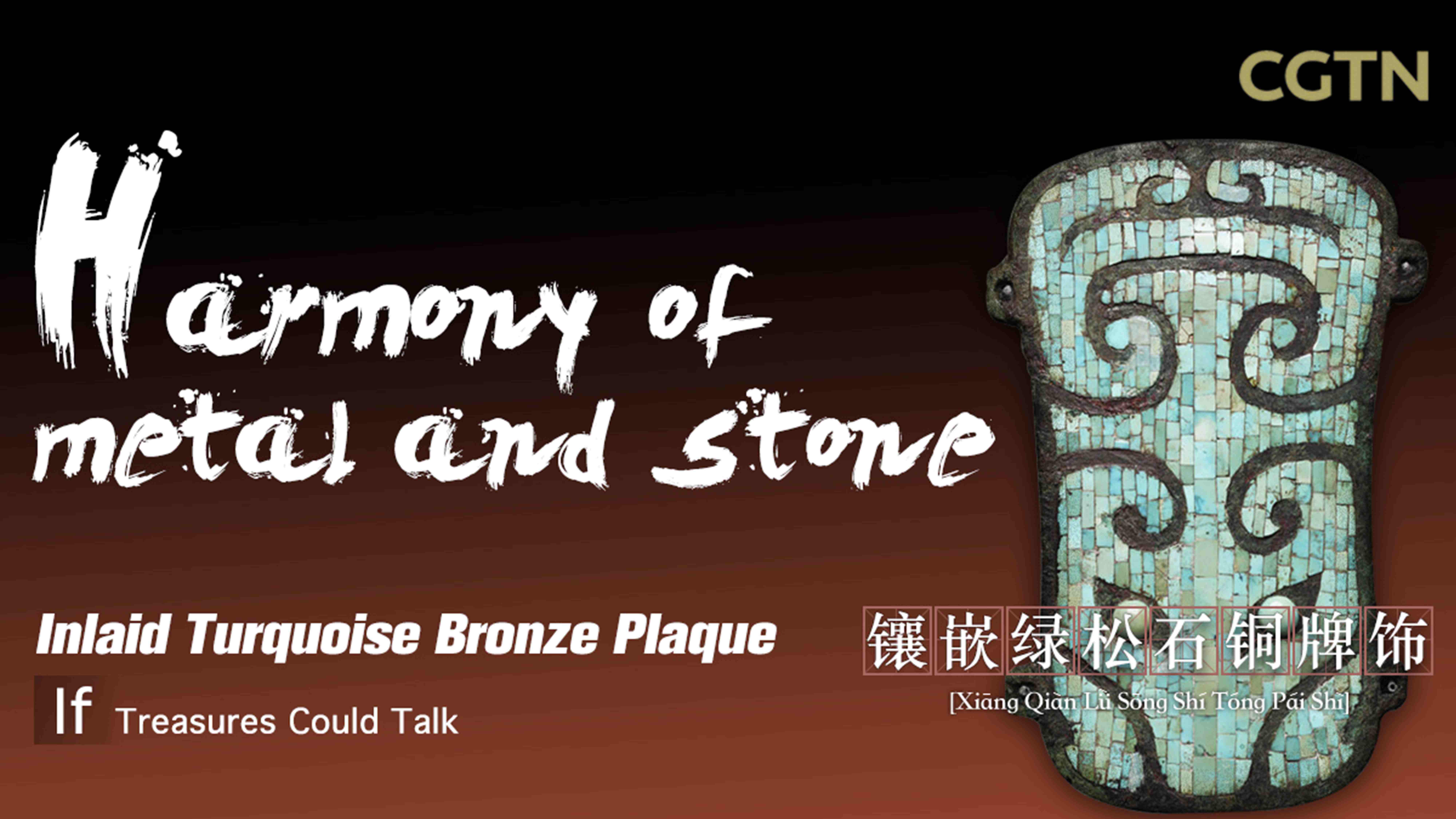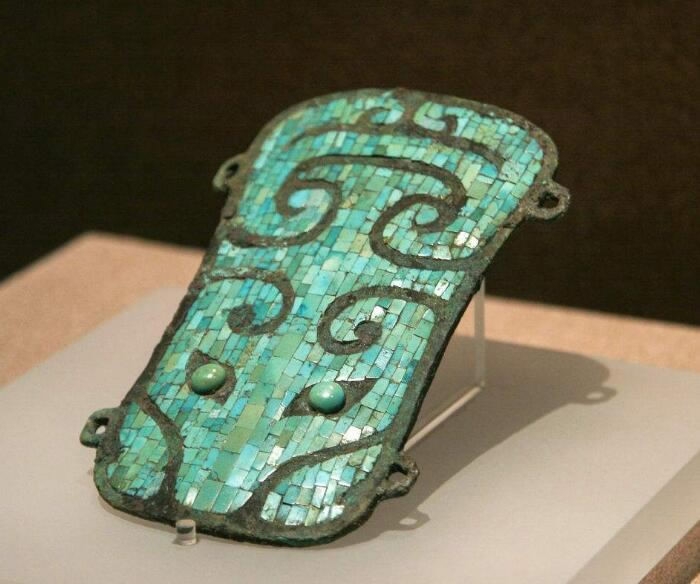
Culture
14:23, 30-Mar-2018
If treasures could talk: What would the Inlaid Turquoise Bronze Plaque say?
CGTN

It’s time to check out some of China's most valuable ancient treasures. Today we resume our special series "If Treasures Could Talk" and present you the Inlaid Turquoise Bronze Plaque.
It is a bronze plaque inlaid with 300 tiny pieces of turquoise, revealing a remarkable level of craftsmanship of the Erlitou Culture, which was an early Bronze Age civilization that flourished in the Yellow River valley.
The treasure represents the harmony of metal and stone. From those angled sockets, two round eyes stare out, through 3,500 years of history.
But is it a dragon or a tiger? A bull or a deer? An owl or a bear? These eyes seem to be asking us the same question: who are you?

The Inlaid Turquoise Bronze Plaque on display. /Sohu Photo
The Inlaid Turquoise Bronze Plaque on display. /Sohu Photo
The Bronze Age emerged relatively early in Western and Central Asia. It was only later that small bronze vessels appeared in northwestern China and, at the time of Longshan culture, on the central plains. During the Erlitou period, bronze vessels were being made, that were of a far greater size than anything seen anywhere else in the world.
The ability to forge metal alloys made the Erlitou culture the most advanced civilization of its time.
The bronze was first cast, and then inlaid with the turquoise. This union between metal and stone heralded a major advance by the Bronze Age in East Asia.
The pieces of turquoise were carved into triangles, hook-shapes, trapezoids, strips, and circles. The image they form is strange, revealing the contours of horns, a nose, eyes.
They cannot speak to us, but they don't need to. Having witnessed China's first dynasty, these eyes are still watching, as time passes.

SITEMAP
Copyright © 2018 CGTN. Beijing ICP prepared NO.16065310-3
Copyright © 2018 CGTN. Beijing ICP prepared NO.16065310-3